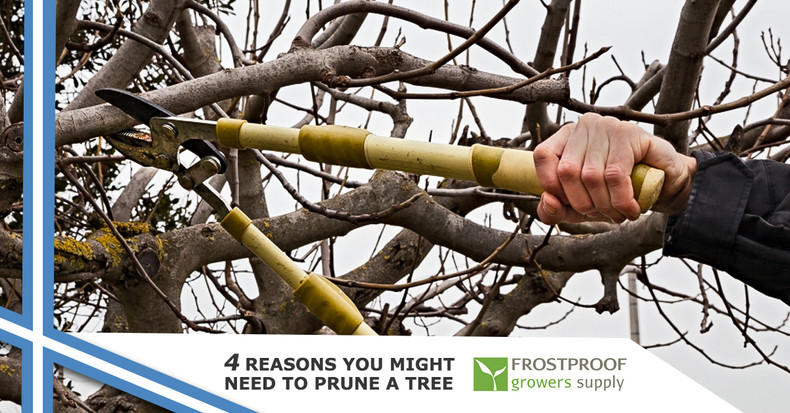
If you’re a homeowner who has just a few trees in your yard, it might be difficult for you to cut a tree. After all, it’s been growing perfectly well all this time, and while it might not look as coiffed as the rest on the trees on the block, you’re enjoying watching the way that it’s grows completely naturally. (You might also be the kind of person who likes to watch the celery go to seed in the garden, or let that interesting-looking weed grow just to see what happens.)
While it’s admirable to let nature take its course, this approach can actually be detrimental to a tree. Now if you’re here looking for orchard supply, you probably already know most of these and have no trouble taking a saw to the branches. But for those you out there who have an emotional attachment to your trees (yes, we understand), here are some reasons that professionals and amateurs alike grab a pole saw in order to make them healthier.
To Shape It
Sometimes people will trim the branches of a tree in order to shape it, and that’s perfectly fine. Perhaps they want it to grow as tall as it possibly can, or they’re more interested in giving it that round, cotton-ball shape. In nearly every case, this is perfectly fine and is actually causing the tree to be stronger.
Remember, though, that the amount you should shape a tree varies by species. Evergreens usually take care of themselves just fine, but it’s a good idea to trim many deciduous trees (for the reasons we’ll get into below).
To Strengthen It
Shaping a tree usually ends up making it stronger. While it might be seem strange to suggest that removing part of a tree can strengthen it, it’s true. When you remove smaller branches that aren’t really adding to the beauty of the tree, the tree will end up putting more energy into strengthening and lengthening its core limbs. This will make the tree stronger at its core and help it to hold up better to snowstorms and heavy wind.
To Prevent Disease
One of the biggest compliments for a tree is “look at that dense canopy.” But a dense canopy can actually be detrimental to a tree. While you certainly don’t want a thin canopy, a canopy that is too thick will reduce the amount of sunlight getting to the center of the tree.
This is a negative for two very important reasons. When that happens, inner branches aren’t receiving much sunlight, meaning that those leaves aren’t able to photosynthesize to their full potential. Even more important is the fact that most tree diseases thrive in cool, dark, wind-protected spaces...the exact same environment that occurs when a canopy is too thick. This problem is especially bad in areas of the country that get a lot of rainfall.
Opening up the canopy gives the sun a chance to dry out the interior of a tree before fungus and other tree diseases can latch on and start harming a tree. And speaking of tree diseases…
Check Out That Tree!
It’s always a good idea to get to know your tree. Take a picture of it once year, then compare that to what it looks like now. Did any unexpected holes open up in the canopy? Are particular branches putting out leaves that look smaller than the others? Getting a good baseline picture when it’s healthy can show you if anything is going wrong this year.
Keep an eye on the trunk, and look for signs of any insects that have chewed their way in. Know what is affecting the trees in your area and how to identify the problems. If you have an ash, watch out for the ash borers. If you have oaks, be aware of the symptoms of oak wilt. Get on a sturdy ladder and take a look at the areas above the main trunk to look for the problems that could affect your particular species of tree. And, to follow the spirit of the article, find out when it’s a good idea — or a bad idea — to trim the tree and apply some wound paint.
We’ve tackled four of the main reasons that you’ll want to trim a tree, but there are many more that we’ll address in the next article. Until then, find the saws that will help you improve your trees right here.

